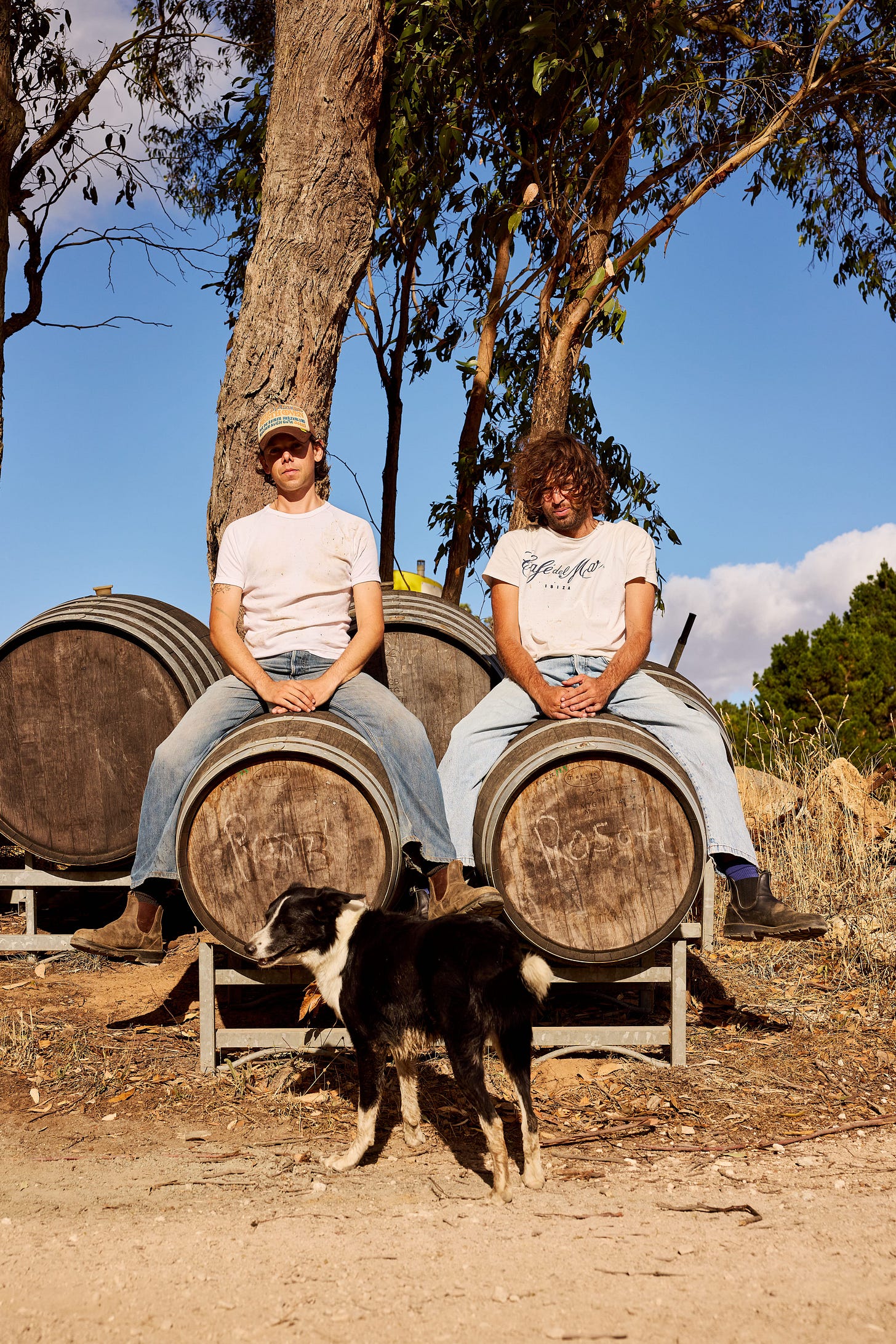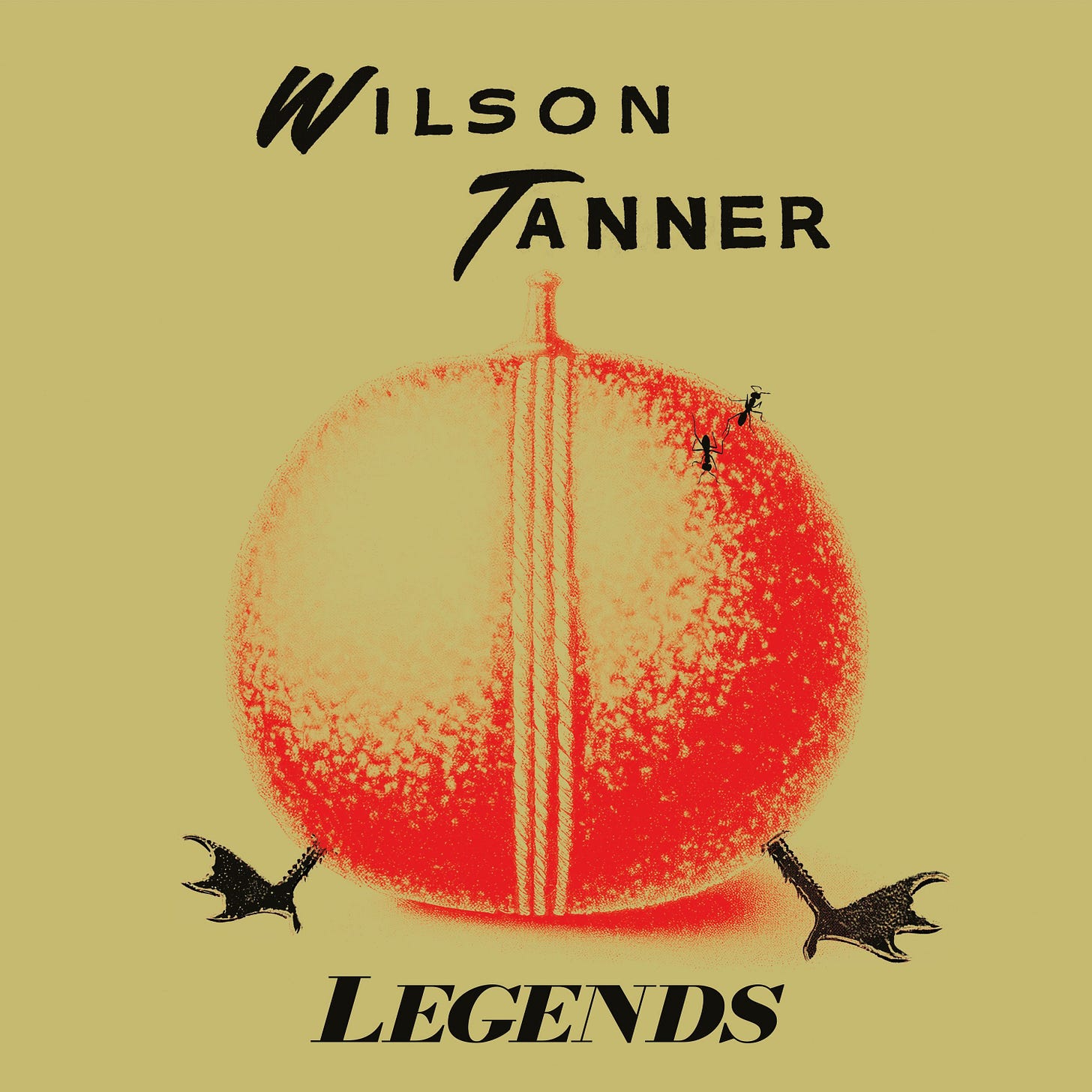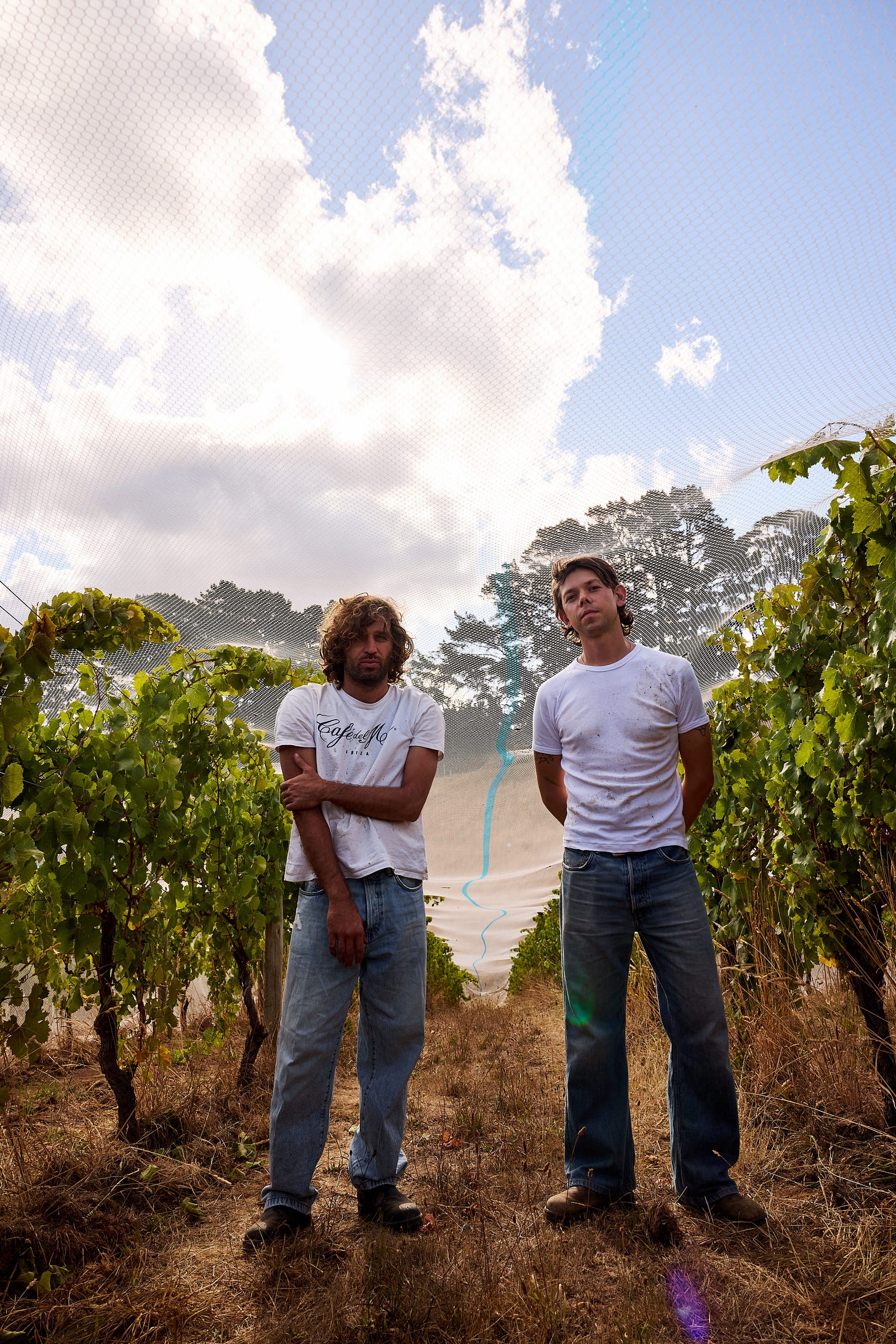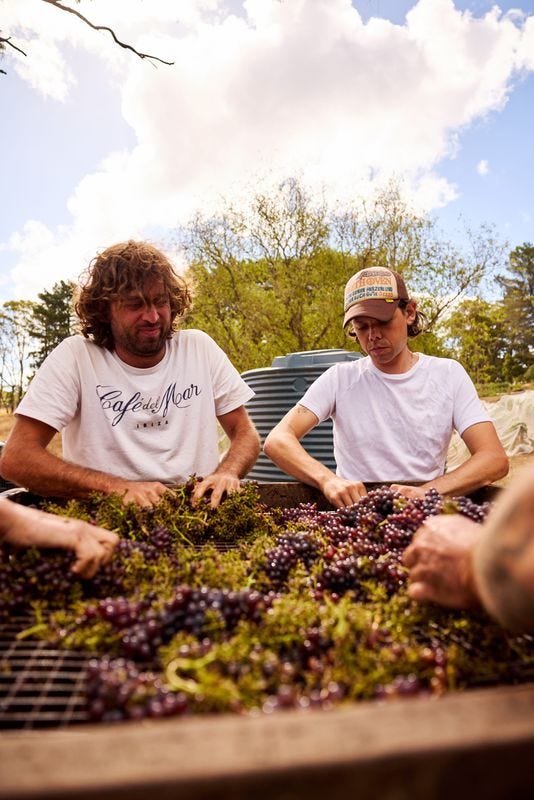Wilson Tanner
Chat with the woozy (or is that Woo-zy?) Aussie ambient duo about wheelbarrows of gear, janky bricolage, music-as-home-cooked-meal, and being handymen masquerading as musicians.
For no outwardly discernible reason, 2014 felt a watermark year for ambient music (though this maybe had something to do with it). Bing & Ruth’s Tomorrow Was the Golden Age and Grouper’s Ruins immediately spring to mind, but there were crucial comps that re-introduced obscure gents like Gigi Masin and Joan Biblioni to a wider audience. Then there were the seemingly one-off groupings like Gaussian Curve’s Clouds (which also featured Masin) and Wilson Tanner’s 69. The latter was the work of two Australian producers, Andrew Wilson and John Tanner.
I find I return to these albums annually, as they always seem to slot into a spring morning or lazy summer afternoon. They strike the perfect balance between sounding like instant classics while at the same time drawing little attention to themselves. If you tune in and feel the patch of sun warmth of them moving through you, lovely! But they are just as affecting even just humming gently in the background. Which is the magic of an ideal ambient album.
At that time, Wilson seemed to be popping up everywhere, mostly under his Andras Fox alias, but also as Andras & Oscar, Fox + Sui, House Of Dad, and as A.r.t. Wilson, meaning that he was also responsible for another 2014 ambient beaut, Overworld.
Recorded in Perth in Western Australia in the summer of 2015, 69 (which is the sign for Cancer, rather than mere laddish sexual innuendo) seemed to capture the essence of an idyllic summer holiday in a bottle. It had the ease that suggested unhurried minds that didn’t need to look at work email for a good month or fret over a deadline. The music meandered like a sunbeam across patio floorboards, fizzing gently like a freshly opened pét-nat. Melodies flutter by like a passing bird.
Three years on, Wilson Tanner followed it up with ii (which reads like a sequel, but the duo refer to it as “aye aye”). This time Wilson Tanner moved the proceedings some 3300 km east of Perth, to a house boat named These Days situated on Port Phillip Bay in Victoria (“aye aye captain!”). The proceedings were a tad more woozy, like two landlubbers still getting their sea legs under them.
And since then, it’s been hard to keep tabs on their movements. For someone as prolific as Wilson had been in the mid-’00s, it was a pace that perhaps couldn’t be kept up, and he’s been more judicious in his releases these past few years.
Some six years on, Wilson Tanner return this month with another holiday destination and album to match, Legends. As the notes put it, their third album is “a wine-soaked agricultural fantasy, made among the grapevines at Manon Farm in South Australia.” So only 700 km or so from Wilson Tanner’s previous destination in Port Phillip. You can almost feel the dust on the vines, the way the sun sets through the branches, and how the first sip of a crisp white hits the palette. The album again makes me feel like I want to go in on an Airbnb with them, knowing I’ll have a proper holiday full of good tunes, tasty meals, sweet landscape explorations, and a judicious amount of libations. I chatted with John Tanner and Andy Wilson about what –if anything– constitutes the Wilson Tanner process.
When I read the credits on the first Wilson Tanner album, trying to get a handle on what was happening there, I thought that the shout-out to one ‘Errol H. Tout’ had to be a pseudonym or in-joke. But lo and behold, I realize he’s an Aussie ambient original.
John Tanner: Andy and I actually met over a mutual appreciation for Errol’s Sounds of Swimming. About 2014, I was in Melbourne for the weekend from Perth, Andy and I had been booked to play the same gig. I’d heard Errol’s music on Andy’s Strange Holiday radio show. Being from Western Australia, Errol’s guitar sound had been a revelation for me when I was much younger. Chatting at the gig this shared reference quickly unravelled a world of things, and Andy invited me on to his radio show the next day.
I remember afterwards we walked across the road from the RRR studio to Andy’s house and he threw together a dinner of shell pasta (Conchiglioni) with bortoli beans or something while talking about new age music cults and putting mud terrain tires on his 4WD. This slice of life from Andy’s world hinted that we were both men of passion and DIY.
Andy Wilson: Perth was a salvation for me, coming over from the east coast to a big sky and outdoor-indoor. We both had utes and seemed to share a love of janky bricolage. I was shaking off classical music, electronic music baggage, and John had some bluegrass in the closet. We made do.
Errol (rest in peace) was real enough that we had a recording session at his place. I think my “instrument” was a desktop PC with a CRT monitor and like…some ancient DAW like cakewalk. I recall being unable to ‘produce’ anything whilst Errol and John played guitar. Errol’s Sound of Swimming album is gorgeous, gave me a taste of a sunlit fantasy that I associate with West Australia. Could write forever on the expanse, but I do hear something horizontal in a lot of the music from here I dig. Read The Plains by Gerald Murnane.
JT: Getting to jam with Errol in his studio was huge. I just remember fumbling around trying to play into Errol’s style. I think Andy has the recording somewhere...
AW: The magic isn’t like…real…it’s setup. It’s like a cooking show shot outside - tons of prep work to get there, things in stainless bowls, it threatens rain, a truck passes at a bad moment, a bird takes off with the produce, Keith Floyd catching something on fire. The dish is changing, but I think we follow a similar kind of recipe – it’s assemblage and the flavour comes from whatever instruments we’ve picked, whatever we can scrounge up in our surroundings, in the moment.
How did you next wind up being aboard a boat in Port Phillip Bay? How important does the landscape become in terms of a Wilson Tanner session?
AW: For ii, our friend James has a small river boat called These Days and offered it to use for use. We just jumped on the chance to be outside in the cooler months, chucking stuff in the wheelbarrow, and heading down to the mooring. Personally, it’s all the annoying logistical setup stuff that makes it feel like real work. Packing lunch, carrying the buckets. I think John and I are handymen masquerading as musicians. I think we both like working with our hands, and doing it outside makes it hands on.
“John and I were batsmen going to the crease, paired at a distance of 22 yards. There was always a third element lurking in the vines - we left space for a triangle to emerge. At various points the extra spirit was a sheep, a third string, Adelaide, the ute, the radio.”
JT: As Andy mentioned, setting up to record ii aboard These Days had purpose and ritual in that ‘going to work’ way, especially given it was a follow up to 69.
We’d arrive at the crack of dawn with grey clouds to the yacht club, walking single file down narrow jetties behind divorced men carrying wheelbarrows filled with fuel and nautical supplies. Ours were filled with synths, laptops and microphones. This landscape was important. It was kind of opposite in many ways to 69 in its west coast summer atmosphere. Call it place/context etc, the landscape is always the entire gamut, natural and artificial.
It’s less of a third member. I think of it the same as a formwork for casting concrete or building a boat, something you assemble to make the thing, but then take away. The tempo of an idling motor setting the rhythm, seagull provoking melody…The landscape makes the ritual, which becomes a kind of distracted procrastination ie, pretending to be seamen packing the ship for a voyage. Not so much avoiding the task of making music but surrounding the sessions. And it goes both ways, surrounding the ritual by making music. So it can be quite productive.
Covid feels like it has been the biggest nugget for us and the project, including scuttling plans for a live performance of ii aboard These Days. It wasn’t until December 2021 that we managed to clear off and head to Manon farm in South Australia to begin work on a new record.
How did you guys land on the idea of recording at the vineyard?
JT: The plan to record at Manon farm happened the same way as the first two records, intuitively going with what is in front of us. We had met Tim and Mon of Manon farm at a wine tasting in 2018, as it turned out they were fans of our music the same as us of their wine. We went on to exchange records and wine during Covid and the conversation about visiting the farm to record music started. It made sense to go there similar to how Andy and I wrangle music together, often arriving at a shared epiphany in unison. The landscape of Manon’s agricultural setting, a vineyard in the Australian bush, Adelaide hills longitudinal middle stump position (between Perth & Melbourne), all made sense to us for the third record.
My first time listening, I kept thinking my iTunes library had skipped ahead from Wilson to Woo. It’s a compliment, of course, to earn comparison to the Ives brothers and their decades of musical merriment as Woo.
AW: I think of Woo as a dyad, the smallest possible social group. With Manon, we were trying expand this feeling across a larger distance: It’s Cosy Outside. John and I were batsmen going to the crease, paired at a distance of 22 yards. There was always a third element lurking in the vines - we left space for a triangle to emerge. At various points the extra spirit was a sheep, a third string, Adelaide, the ute, the radio, et al.
It also struck me that the sonic palette is also mostly acoustic.
AW: The original recordings are indeed acoustic, save for a battery-powered keyboard with inbuilt speakers. But the electric equipment colours the post-production process;John and I are both enthusiastic about Sound Devices portable recording units, CB radio, tape machines, and valve amps. Organic produce, but cooked with liquid petroleum gas and electricity, cooled in the fridge/ freezer.
What was the biggest challenge in the making of it?
AW: We generated a lot of raw material – four whole days of bumbling trombone, saxophone, and balalaika. The hardest part was finding time to prune, press, and filter the recordings into something listenable. We have a loose and improvised recording style, but ultimately John and I are trying to make you something that feels like a home-cooked meal. It was three years between the vineyard sessions and our next session making selections and edits at my studio. I think the distance (spatial, temporal) helps colour the final Legends, which is a fantasy of the verdant harvest to come.
After the jump, some amuse-bouche and tasty bits from Wilson Tanner:
Keep reading with a 7-day free trial
Subscribe to Beta’s Substack to keep reading this post and get 7 days of free access to the full post archives.





